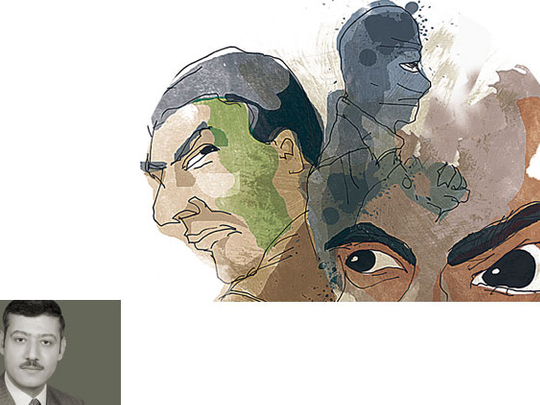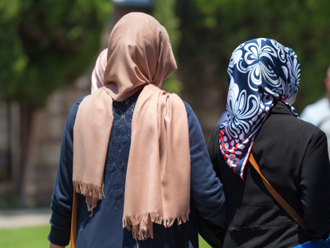
The announcement by the US Department of Justice that Iran was plotting to murder the Saudi ambassador to Washington is a dramatic development in the ongoing conflict between the two big regional powers in the Middle East and the Gulf region. Since the US invasion of Iraq, Tehran and Riyadh has been involved in an open confrontation over dominance of the entire region. The conflict is mainly political but has ideological and religious aspects too. Iran represents revolutionary Shiites whereas Saudi Arabia has been regarded as leader of moderate Sunnis with strong ties to the West.
For years now, officials and analysts have been expressing fears about the increasing sectarian tension in the Arab world that is threatening to turn into a full-fledged confrontation. In an interview with ABC news in November 2006, King Abdullah II of Jordan warned that the sectarian violence in Iraq was threatening to spiral out of control. Unless some very strong action is taken on the ground, the king added, the Middle East was likely to face the prospect of three civil wars in 2007 — in Iraq, Palestine and Lebanon.
A year earlier, the king was criticised for cautioning of a Shiite crescent that stretches from Tehran to Beirut, through Iraq and Syria. Many Arab commentators believed that the king was exaggerating Iran’s rising influence and that he was driven by unwarranted fear of a Shiite revival in the Middle East. A few months later, an American scholar from Iranian origins came with just the same idea. Vali Nasr, a Professor at the US Naval Postgraduate School, wrote his famous book: The Shia Revival: How Conflicts within Islam Will Shape the Future.
Nasr argued that by toppling Saddam Hussain, the US may have just liberated and empowered Iraq’s Shiite majority and helped launch a broad Shiite revival that will upset the sectarian balance in Iraq and the broader Middle East for years to come. The US had also ridden Iran of another regional Sunni foe, the Taliban government in Afghanistan, lifting yet another restraint on Tehran’s regional ambitions.
These developments have rattled Sunni Arab governments, especially Saudi Arabia, which openly criticised the US for destroying the Sunni-led regime in Iraq and hence letting the ‘Shiite genie’ out of the bottle. But, this year things seem to have taken even a more dramatic turn. The Arab Spring, which came as a pleasant surprise for the pro-democracy activists in the Arab world, turned into becoming another element in the conflict between the Saudis and the Iranians.
Anxious to prevent Iran from taking advantage of the fluid situation in the Arab world, the Saudis took the unusual step of getting directly and openly involved in a decisive confrontation over the future of the region.
Last March, Riyadh led a coalition force from the GCC countries into Bahrain to help the government crush the Iran-backed Shiite protest movement. Following the collapse of Egypt’s Mubarak regime, the Saudis rushed to provide financial handouts to the new Egyptian government. Had the Saudis refrained from doing so, the Iranians would have gladly provided an alternative. Saudi Arabia is also leading mediation efforts to help resolve the political crisis in Yemen. Here too the aim is to stop Iran from using its local allies to establish an anti-Saudi government in Sana’a. In 2009, the Saudi army provided direct support for the Yemeni government against the Iranian-backed Houthi rebels.
Last summer, Saudi Arabia invited Jordan and Morocco to join the GCC to consolidate its position vis-a-vis Iran’s increasing interference in the internal affairs of the GCC. Sporadic unrest in the Shiite-majority eastern province of Saudi Arabia is seen as part of a Shiite revival inspired by the empowerment of Iraqi and Lebanese Shiites and supported by Iran.
The latest episode in the Iran-Saudi conflict is clearly manifested in Syria, wherein the two countries have taken opposite sides. Iran, alongside the Shiite-dominated government of Iraq and the Lebanese Hezbollah, is supporting the Syrian regime. Saudi Arabia and the other Sunni regimes in the Gulf are, on the other hand, backing the protest movement, seen by many — right or wrong — as a Sunni revolt.
Clearly, the Iranians are facing a counter-offensive that threatens the project they have been pursuing for years just when it appeared to be coming to fruition. The relative success of the Saudis in containing Iran will result in the emergence of a new balance of power on the ground. Given the emerging situation, Iran might choose to use all sorts of strategies and tactics to limit the damage and reverse the tide of events. The foiled attempt to assassinate the Saudi ambassador in Washington DC, who seems to be playing a key role in his country’s policy to contain Iran, must been understood within this context of this grand regional conflict.
Dr Marwan Kabalan is the Dean of the Faculty of International Relations and Diplomacy, Kalamoon University, Damascus, Syria.









